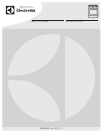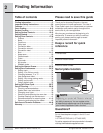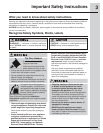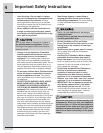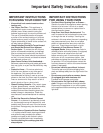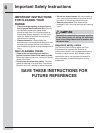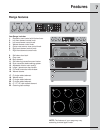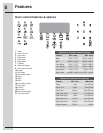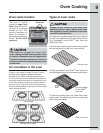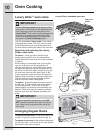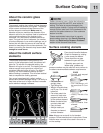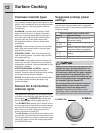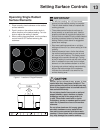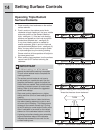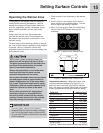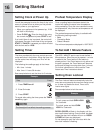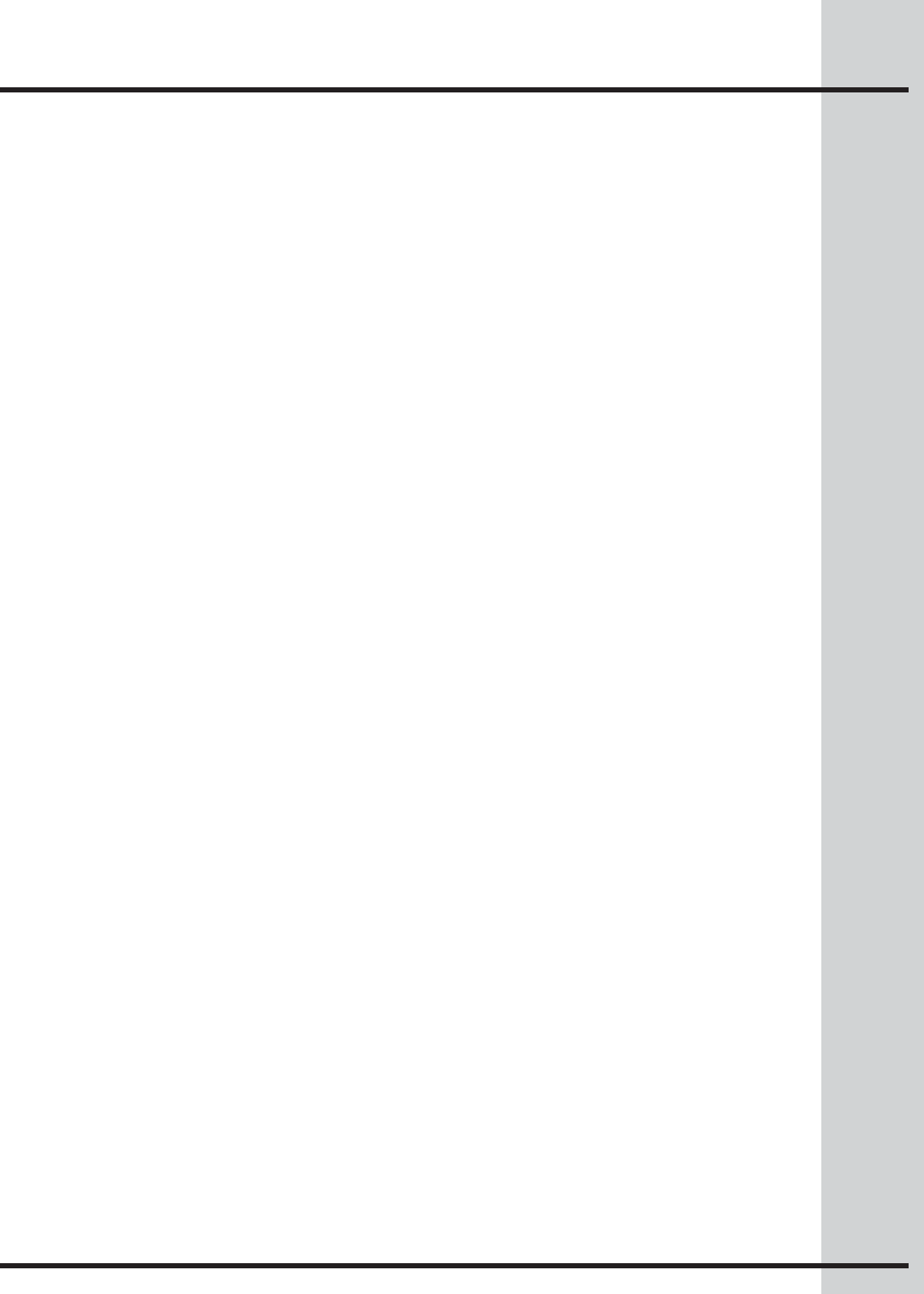
5
IMPORTANT INSTRUCTIONS
FOR USING YOUR COOKTOP
• Know which knob controls each surface
heating unit.
• Use Proper Pan Size—This appliance is
equipped with one or more surface units of
different sizes. Select utensils having fl at
bottoms large enough to cover the surface unit.
The use of undersized utensils will expose
a portion of the surface heating unit to direct
contact and may result in ignition of clothing.
Proper relationship of utensil to the surface unit
will also improve effi ciency.
• Utensil Handles Should Be Turned Inward
and Should Not Extend Over Adjacent
Surface Units—To reduce the risk of burns,
ignition of fl ammable materials, and spillage
due to unintentional contact with the utensil.
The handle of the utensil should be positioned
so that it is turned inward, and does not extend
over adjacent surface unit.
• Never Leave Surface Units Unattended—
Boilovers cause smoking and greasy spillovers
that may ignite, or a pan that has boiled dry may
melt.
• Protective liners— Do not use aluminum
foil to line oven bottom or any other part of
the appliance. Only use aluminum foil as
recommended for baking if used as a cover
placed on the food. Any other used of protective
liners or aluminum foil may result in a risk of
electric shock or fi re or a short circuit.
• Glazed Cooking Utensils—Only certain types
of glass, glass/ceramic, ceramic, earthenware,
or other glazed utensils are suitable for
cooktop service without breaking due to the
sudden change in temperature. Check the
manufacturer’s recommendations for cooktop
use.
• Do Not Use Decorative Surface Element
Covers— If an element is accidentally turned
on, the decorative cover will become hot and
possibly melt. Burns will occur if the hot covers
are touched. Damage may also be done to the
cooktop.
• Do Not Clean or Operate a Broken Cooktop
— If cooktop should break, cleaning solutions
and spillovers may penetrate the broken
cooktop and create a risk of electric shock.
Contact a qualifi ed technician immediately.
• Avoid scratching the cooktop glass with
sharp objects.
IMPORTANT INSTRUCTIONS
FOR USING YOUR OVEN
• Use Care When Opening Door or Drawer—
Stand to the side of the appliance when opening
the door of a hot oven. Let hot air or steam
escape before you remove or replace food in
the oven/warmer drawer.
• Keep Oven Vent Ducts Unobstructed. The
oven is vented at the front above the oven door
or through the rear of cooktop. Touching the
surfaces in this area when the oven is operating
may cause severe burns. Also, do not place
plastic or heat-sensitive items on or near the
oven vent. These items could melt or ignite.
• Placement of Oven/Warmer Drawer (if
equipped) Racks. Always place oven racks in
desired location while oven/drawer (if equipped)
is cool. Remove all utensils from the rack
before removing rack. If rack must be moved
while oven is hot, use extreme caution. Use
potholders and grasp the rack with both hands
to reposition. Do not let potholders contact the
hot oven element or interior of the oven/warmer
drawer (if equipped).
• Do not use a broiler pan without its insert.
The broiler pan and grid allow dripping fat to
drain and be kept away from the high heat of the
broiler.
• Do not cover your broiler or warmer drawer
(if equipped) grid with aluminum foil.
Exposed fat and grease could ignite.
• Do not touch a hot light bulb with a damp
cloth. Doing so could cause the bulb to break.
Disconnect the appliance or turn off the power
to the appliance before removing and replacing
light bulb.
Important Safety Instructions



